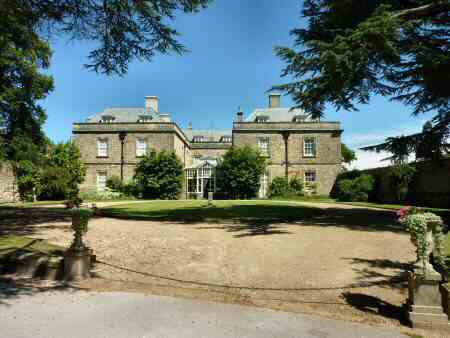MELBOURNE
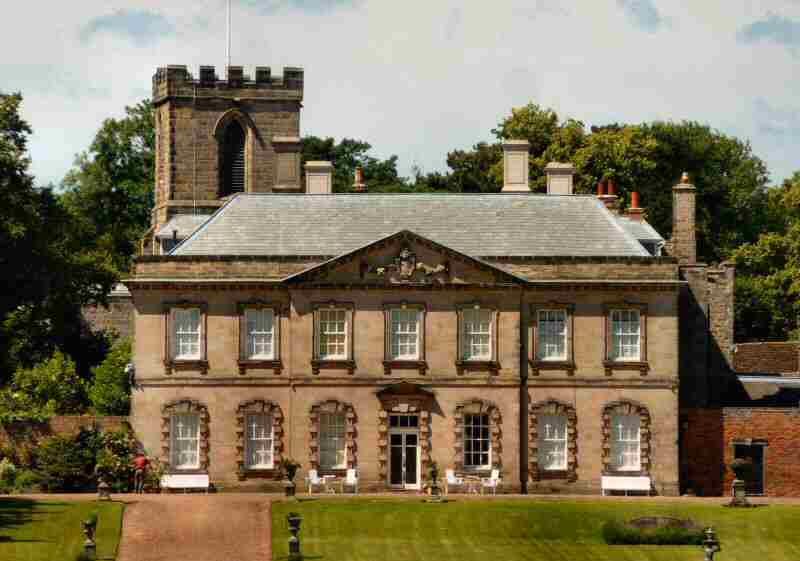
INFORMATION
Where is it? – On the B587 just off the A514 from Derby to Swadlincote (SK389252).
What to do? – Visit Melbourne Hall and Gardens which was once the home of Victorian Prime Minister, William Lamb, for further information visit www.melbournehall.com or telephone 01332 842959 – explore the church and find out more about its links with Australia – obtain a trail leaflet and take a walk around Melbourne and pick out the points of special interest.
Where to eat? – There are several restaurants and other outlets that serve refreshments including Melbourne Hall Tea Rooms which is situated in what used to be the washrooms and bakehouse of the hall. One of the old baking ovens remains in these delightful tea rooms that have built up an enviable reputation for light meals and teas – Telephone: 01332 864224.
Other places to visit – Calke Abbey and Park ‘the place where time stood still,’ was the phrase used to describe this property when The National Trust opened it to the public in 1989. One of the most unusual of English country houses with large collections of birds, ornaments, paintings and photographs – Staunton Harold Hall and the Chapel of the Holy Trinity is set in landscaped gardens with the rolling wooded hills of Leicestershire as a backdrop. The church of Holy Trinity is one of England’s best-situated churches and is now in the hands of the National Trust and can be visited on selected days. The Ferrers Centre for Arts and Crafts is located in the Georgian Stable Block of Staunton Harold Hall, where a wide range of goods can be obtained and refreshments obtained – Foremark Reservoir a 230-acre reservoir provides footpaths, picnic facilities, sailing and good trout fishing. A recent addition is an area of woodland planted with 10,000 trees.
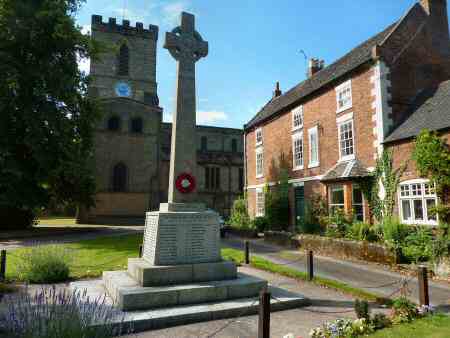
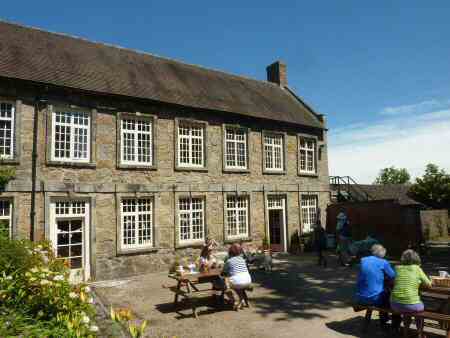
PROFILE
Set among pleasant rolling countryside in South Derbyshire is the fascinating little town of Melbourne. It has a wealth of historic buildings, a famous country house with formal gardens, one of the finest Norman churches in the country, and a lovely 20-acre Pool where you can feed the ducks, or just rest awhile and admire the scenery. The town, or as some call it the village – has only a parish council – which also serves the village of King’s Newton.
Nowadays, Melbourne has a wide variety of small industries, but before the late 18th century it was only a small agricultural village. Market gardening was an important feature of the area. With its good loamy soil and relatively frost-free north-facing slopes, several centuries ago Melbourne became a centre for the supply of fruit and vegetables. Increased competition has reduced its importance, but there is still plenty of evidence of its existence in the area.
STREET SCENE
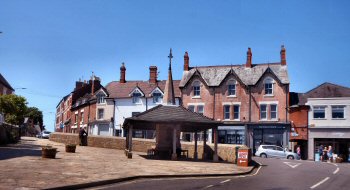
Melbourne is well-stocked with shops that meet the needs of local people and visitors alike, and there is a good selection of places to eat and drink. It contains a wide variety of interesting properties ranging from large houses in beautifully landscaped gardens to artisans’ cottages on Blanch Croft. Where former framework knitters’ residences can be seen with their long low windows designed to attract as much light as possible. Potter Street and Church Street are both impressive, incorporating a wide collection of property styles.
At the bottom of Potter Street, the principal street in medieval times is a large impressive-looking thatched cottage. It was divided into seven cottages in 1824 but has now been restored to one. Further up the street The Athenaeum and Mechanic’s Institute had its foundation stone laid in 1853 by Lord Palmerston, one of Queen Victoria’s Prime Ministers, whose wife inherited Melbourne Hall. In High Street is a well-preserved cruck beam cottage and in Penn Lane look out for the distinctive cast-iron windows of the former National School.

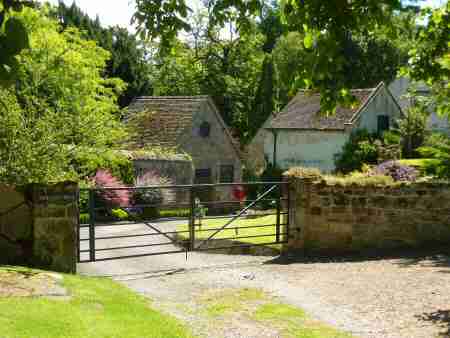
CASTLE SQUARE
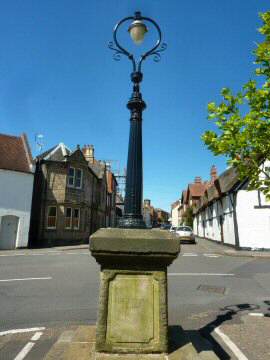
Castle Square was the site of the medieval marketplace, the centre of which now serves as a car park. On the north side stands the White Swan with the inn sign clasping the corner of the building. On the southern side, there was once a substantial castle, on land adjacent to where Castle Farm now stands.
The castle fell into disrepair in the 17th century, and enterprising local builders were not slow to make use of such a good supply of stone. All that remains above ground is a wall made up of infillings of the castle wall, the facing stones having been removed. The remains are on private land where following excavation work, the layout of some of the castle rooms has been revealed.

MELBOURNE HALL
A prominent landmark in the town is Melbourne Hall with its fine furniture and paintings. It is the birthplace of Lord Melbourne, Queen Victoria’s first Prime Minister, who gave his name to a small settlement on the River Yarra – Yarra, which is now Australia’s second city. The design of the hall gardens was undertaken by William III’s gardeners, London and Wise, who have succeeded in a comparatively small area in creating deceptively spacious gardens.
Focal points are Robert Bakewell’s great wrought iron domed cage, known as ‘The Birdcage’ and an elaborate monument by Van Nost, which illustrates the Four Seasons. The Yew Tunnel is reputedly the longest in Europe.
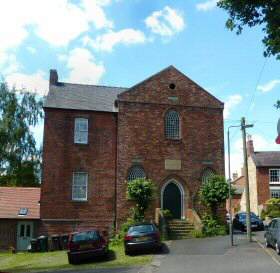
ST MICHAEL’S WITH ST MARY CHURCH
It comes as something of a surprise to most visitors to find one of the largest Norman churches in England in such a small town. The parish church of St Michael’s with St Mary goes back to 1133 when Henry I gave the royal manor of Melbourne to the first Bishop of Carlisle.
At that time Carlisle was on the edge of the heathen north and the Bishop needed somewhere to retreat when the Scots overran Carlisle. The roof was raised and the windows enlarged in the 19th century, the old roof marks being visible from the southeast. In the north aisle hang the flags of Melbourne and Australia.
Opposite the great west door of the church is what is believed to have been a tithe barn, to which a brick-built upper storey has been added. Beyond that is Dark Entry, a narrow passageway once used by priests on their way to and from the church to the chantry. Across the road from the church, in the estate buildings of Melbourne Hall, is a craft centre and tea rooms.
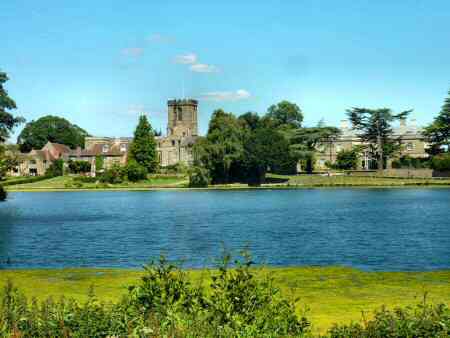
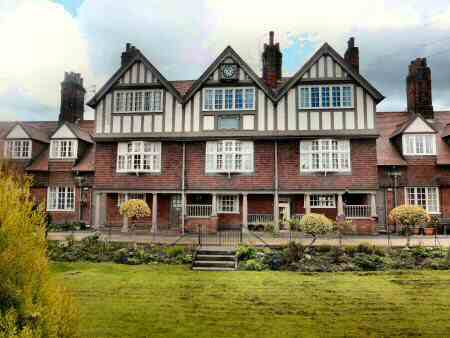
THOMAS COOK
It was in a small cottage on Quick Close, off High Street, in 1808, that Thomas Cook was born. His name is now known throughout the world for the travel company he founded. At the age of 28, he moved to Leicester to work for the Baptist Church.
When Cook’s first organised trip was to transport, by rail, passengers from Leicester to Loughborough and back again. The 570 passengers attended a temperance rally at the cost of one shilling each. This was successful, as were other trips and the railway company asked him to organise excursions. He went into business on a full-time basis, which was the beginning of what is today an internationally renowned business. The cottage he was born in has been demolished, but the almshouses he built in Melbourne remain as a lasting memorial, together with a special garden dedicated to him.
FESTIVAL
Visitors are attracted to Melbourne throughout the year, to admire its beautiful buildings, and enjoy its air of peace and tranquillity. The highlight of the year is its festival of music and creative arts, which takes place in September each year. During the festival, a very popular two-day Art and Architectural Trail takes place. An opportunity to see around 100 of the most talented artists in the Midlands at over 60 locations and much more.
